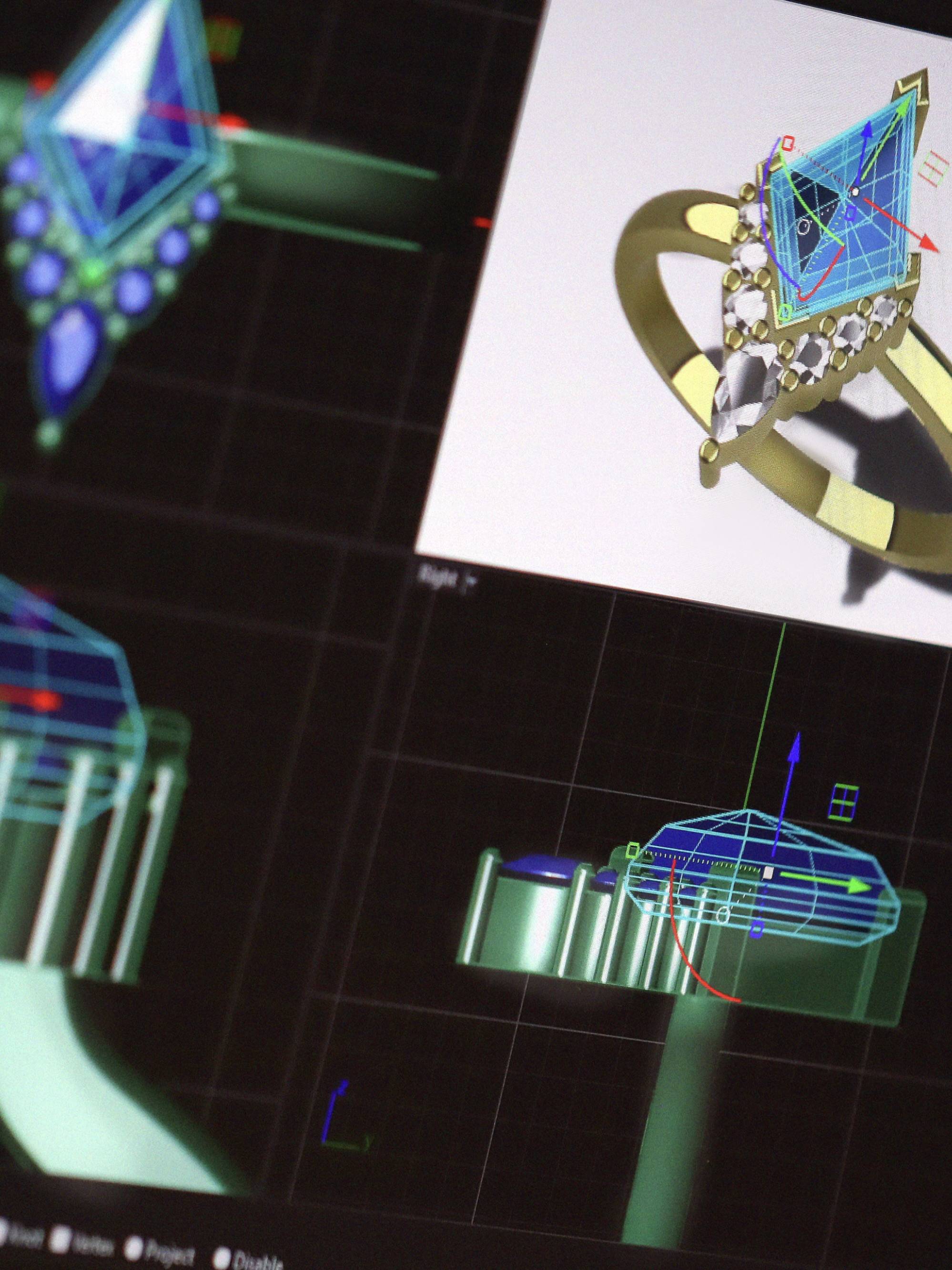RING GUIDES
Diamond 4Cs Guide

When choosing the perfect diamond engagement ring, the process can feel slightly daunting with so many factors to consider. You may have come across the 4 Cs, which play a significant role in determining a diamond's price, quality, and aesthetics. Let's explore what each of these Cs entails and how they influence your diamond selection.
Brief History of the 4Cs
The concept of the 4Cs was pioneered by Robert M. Shipley, the founder of GIA, in the early 1900s to establish a definitive method for grading diamonds. Prior to the development of the 4Cs, diamond grading lacked uniformity, leading to variations in the perceived quality of diamonds based on subjective opinions.
Today, the 4Cs serve as the universally accepted standard for grading diamonds, providing a consistent and transparent framework for assessing diamond quality across the globe. This standardised approach ensures that consumers can make informed decisions when purchasing diamonds.
What are the 4Cs?
The 4Cs are characteristics used to determine the quality of a diamonds. This way of grading diamonds takes into account 4 factors:
1. Carat Weight
Carat weight is a measure of a diamond's size, with one carat equal to 200 milligrams. Larger diamonds generally have a higher carat weight and are considered more valuable.
2. Cut
The cut of a diamond refers to its proportions, symmetry, and polish. A well-cut diamond reflects light effectively, resulting in enhanced brilliance and sparkle.
3. Colour
Diamond colour is graded on a scale from D (colourless) to Z (light yellow or brown). The less colour a diamond exhibits, the higher its grade and value.
4. Clarity
Clarity assesses the presence of internal flaws (known as inclusions) and external blemishes in a diamond. Diamonds with fewer inclusions and blemishes receive higher clarity grades and are considered more valuable.
Book an Appointment with an Expert
Whether in person or online, our jewellery experts are here to assist you every step of the ring buying journey.

Carat Weight
Let's explore how carat weight impacts both the quality and visual appeal of a diamond. The carat weight of a diamond significantly contributes to its perceived value and overall size.
1. What is Carat Weight?
Carat, abbreviated as 'ct', measures a diamond's weight. While two diamonds may share the same carat weight, variations in appearance arise from factors like cut and shape. A diamond's cut can influence its perceived size, potentially making a diamond appear larger despite having a lower carat weight than another.
2. Carat Weight and Price
3. When Did We Start Measuring Diamonds in Carats?
The practice of measuring diamonds in carats has ancient roots. The term "carat" originates from the historical use of carob seeds, known for their consistent weight, as a unit of measurement for gemstones. While the concept of carat weight for diamonds evolved over time, it wasn't until the early 20th century that the metric carat, equivalent to 200 milligrams, became the standardised unit of measurement for diamonds and other precious gemstones. This standardisation ensured uniformity and accuracy in assessing diamond size and value within the jewellery industry.
4. What Effect Does Carat Weight Have on the Size of a Diamond?
Cut
The cut of your diamond can drastically change the way it looks. Let's discover what kind of cut makes diamonds truly sparkle.
1. What is a Diamond Cut?
The cut refers to the proportions, symmetry, and overall craftsmanship of the diamond's facets, which directly influence its brilliance, fire, and sparkle.
2. What is the Best Diamond Cut?
3. Why is Cut Important for a Diamond?
4. Which Cut Has the Most Sparkle?
All Your Questions Answered
Have all your questions answered by a professional. Our diamond experts are available to provide guidance on selecting the ideal gemstone for you.
Don't hesitate to reach out for a chat with one of our experts and get all of your questions addressed.

Colour
Explore the spectrum of diamond hues to discover which colours elevate the elegance of your jewellery pieces.
1. What is Diamond Colour?
The GIA utilises a grading scale for diamond colours ranging from D (colourless) to Z (slightly coloured) to evaluate and categorise diamonds based on their hue. Diamonds with a D grade are considered the most valuable due to their exceptional lack of colour, while those closer to Z may exhibit subtle tints of yellow or brown. This grading system ensures transparency and consistency in assessing diamond colour quality across the industry.
2. Colour Scale for Diamonds
3. How is a Diamonds Colour Grade Determined
4. Which Colour Diamond is Right for You?

Clarity
Discover the diamond clarity grading scale, delve into the realm of diamond inclusions, and understand why a genuinely flawless diamond is exceptionally rare.
1. What is Diamond Clarity?
Clarity refers to the presence of internal flaws (inclusions) and external blemishes in the diamond, which can affect its overall appearance and brilliance.
2. Clarity Scale for Diamonds
3. How is a Diamonds Clarity Grade Determined?
4. How Clarity Effects the Diamonds Sparkle
Explore our ring collections
Browse our selection of engagement and wedding rings. From salt and pepper diamonds to sapphires, our specialities lie in the unconventional.




